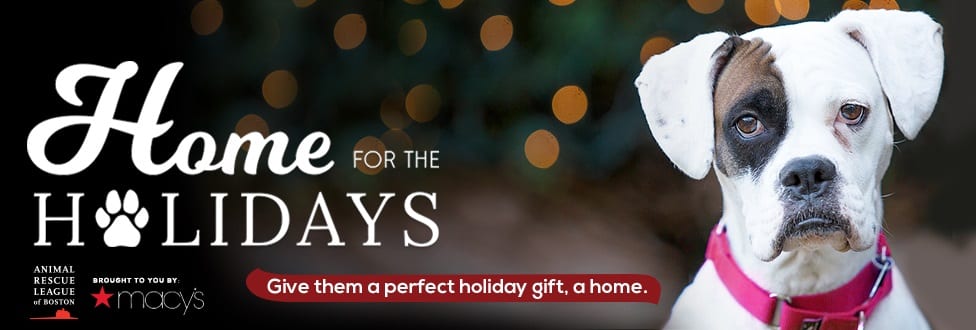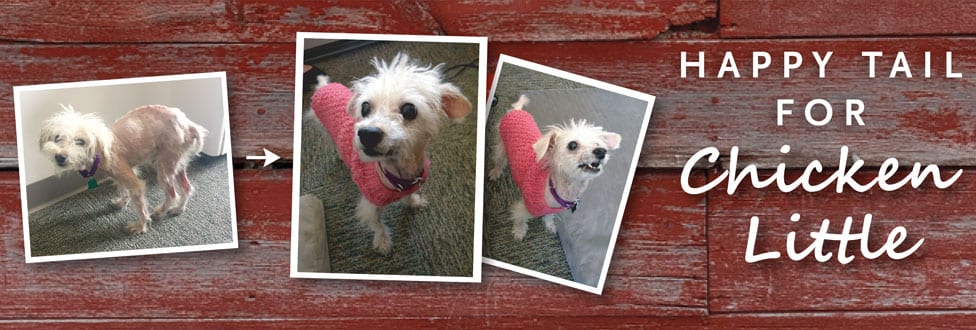Nina is Home for the Holidays!
Give a shelter pet the perfect holiday gift, a home
At the ARL, our biggest holiday wish is for the animals in our care and the individuals willing to open their hearts to find one another! Every year, the Animal Rescue League of Boston (ARL) unites over 3,000 deserving animals with families and places another 850 with dedicated ARL foster volunteers.

ARL shelter veterinarians discovered large mast cell tumors all over Nina’s body during a routine spay surgery. Thanks to their thorough medical attention, the tumors were removed and Nina was able to go home for the holidays!
Special animals like Nina will have a season that’s merry and bright now that she’s home for the holidays!
Nina, a gorgeous 3-year-old boxer mixer, came into ARL’s Boston shelter earlier this fall when her family was forced to give her up due to landlord restrictions. Up until that point, she had been living with her family, including one child, her entire life.
When Nina arrived at the ARL’s Boston shelter, she instantly became a staff favorite! Anyone who glanced into her big round chocolate brown eyes instantly fell in love and came in closer for a snuggle.
Nina couldn’t get enough attention from her human friends and was was always eager to show off her basic commands for some tasty treats and a generous scratch in her favorite spot- right behind her floppy ears!
It was clear that Nina was ready for a permanent home, but first she would need to be spayed in order to meet potential adopters.
Unfortunately for Nina, things took an unexpected turn. During the routine spay surgery, ARL shelter veterinarians Dr. Quigley and Dr. Doyle came across several large mast cell tumors that were unknowing growing inside of Nina’s legs, back, shoulders, and stomach.
ARL’s veterinarians carefully scanned her body to locate and remove all the tumors and immediately send them out to be biopsied. Several hours and $1,500 worth of procedures later, Nina was awoke from surgery.

Nina happy and settling into her new waterfront home. Something tells us she’ll become a beach bunny in no time at all!
Tired and weak, Nina patiently waited for the results of her biopsy while resting alongside ARL’s wonderful volunteers and staff. Everyone knew that she was one tough cookie, so there was no doubt that Nina would be back on her feet in no time!
A couple of weeks later, Nina received the good news she’d be hoping for! Her tumors were benign and she was medically cleared for adoption!
Shortly thereafter, Nina got her holiday wish and went home with her forever family. By all accounts, she is doing great and hasn’t let her surgery hold her back one bit!
Nina’s new dad was happy to report that, “everything has been so much fun thus far! Nina is adjusting well and is already excited to go running on the beach!”
YOU can help deserving shelter pets like Nina find a home for the holidays by…
- ADOPTING from the ARL! Search adoptables
- Checking out the wishlists at our shelters in Boston, Brewster, and Dedham
- Using Amazon Smile when you shop and select the Animal Rescue League of Boston as the charity you support
- Giving a donation to the ARL in honor of an animal-friendly friend or family member. With a donation of $25 or more, you can select a special card, too!
THANK YOU to Macy’s Boston for helping more ARL shelter animals find a Home for the Holidays!




















